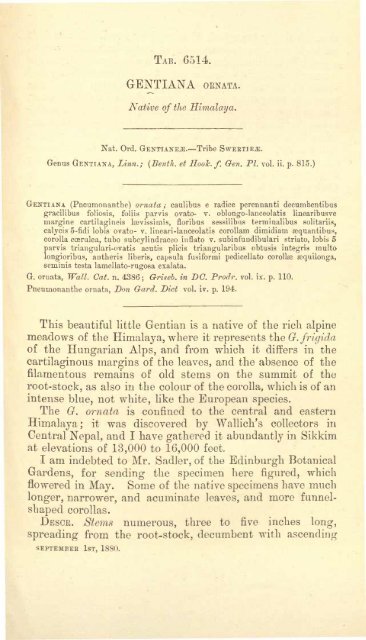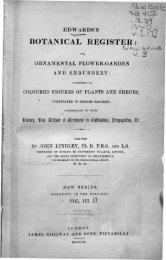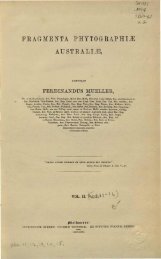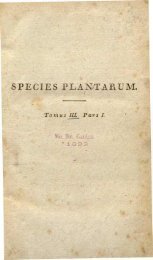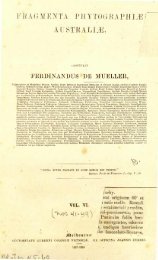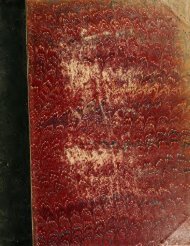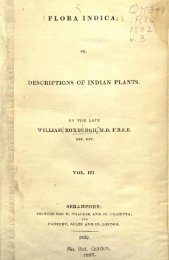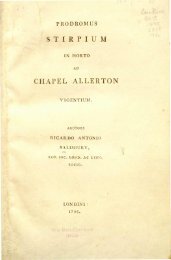Botanical Magazine 106 - 1880.pdf - hibiscus.org
Botanical Magazine 106 - 1880.pdf - hibiscus.org
Botanical Magazine 106 - 1880.pdf - hibiscus.org
You also want an ePaper? Increase the reach of your titles
YUMPU automatically turns print PDFs into web optimized ePapers that Google loves.
TAB. 6514.<br />
GENTIANA OENATA.<br />
Native of the Himalaya.<br />
Nat. Ord. GENTIANEJE.•Tribe SWEETIES.<br />
Genus GENTIANA, Linn.} (Benth. et Hook. f. Gen. PI. vol. ii. p. 815.<br />
GENTTANA (Pneumonanthe) ornata ; caulibus e radice perennanti decumbentibus<br />
gracilibus foliosis, foliis parvis ovato- v. oblongo-lanceolatis linearibusve<br />
margine cartilagineis lsevissimis, floribus sessilibas terrainalibus solitariis,<br />
calycis 5-fidi lobis ovato- v. lineari-lanceolatis corollam dimidiam a;quantibus,<br />
corolla c•rulea, tubo subcylindraceo inflato v. subinfundibulari striato, lobis 5<br />
parvis triangulari-ovatis acutis plicis triangularibus obtusis integris multo<br />
longioribus, antberis liberis, capsula fusiformi pedicellate corollae sequilonga,<br />
seminis testa lamellato-rugosa exalata.<br />
G. ornata, Wall. Cat. n. 4386; Griseb. in DC. Prodr. vol. ix. p. 110.<br />
Pneumonanthe ornata, Don Gard. Diet vol. iv. p. 194.<br />
This beautiful little Gentian is a native of the rich alpine<br />
meadows of the Himalaja, where it represents the G. frit/ida<br />
of the Hungarian Alps, and from which it differs in the<br />
cartilaginous margins of the leaves, and the absence of the<br />
filamentous remains of old stems on the summit of the<br />
root-stock, as also in the colour of the corolla, which is of an<br />
intense blue, not white, like the European species.<br />
The G. ornata is confined to the central and eastern<br />
Himalaya; it was discovered by Wallich's collectors in<br />
Central Nepal, and I have gathered it abundantly in Sikkim<br />
at elevations of 13,000 to 16,000 feet.<br />
I am indebted to Mr. SadJer, of the Edinburgh <strong>Botanical</strong><br />
Gardens, for sending the specimen here figured, which<br />
flowered in May. Some of the native specimens have much<br />
longer, narrower, and acuminate leaves, and more funnel-<br />
shaped corollas.<br />
DESCE. Stems numerous, three to five inches long,<br />
spreading from the root-stock, decumbent with ascending<br />
SEPTEMBER 1ST, 1880.


